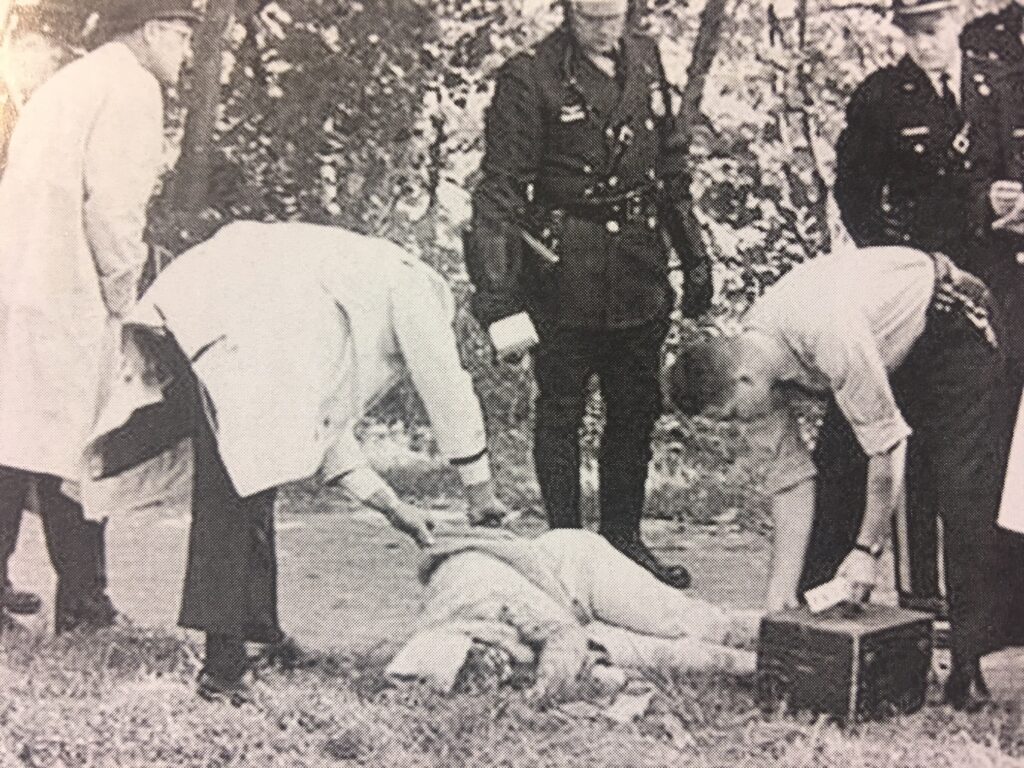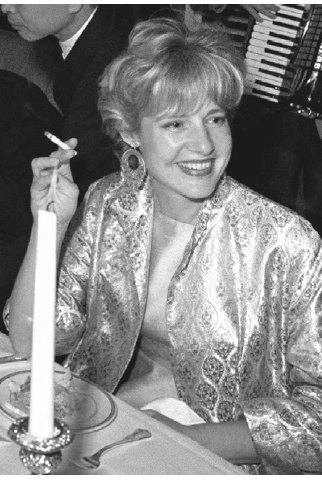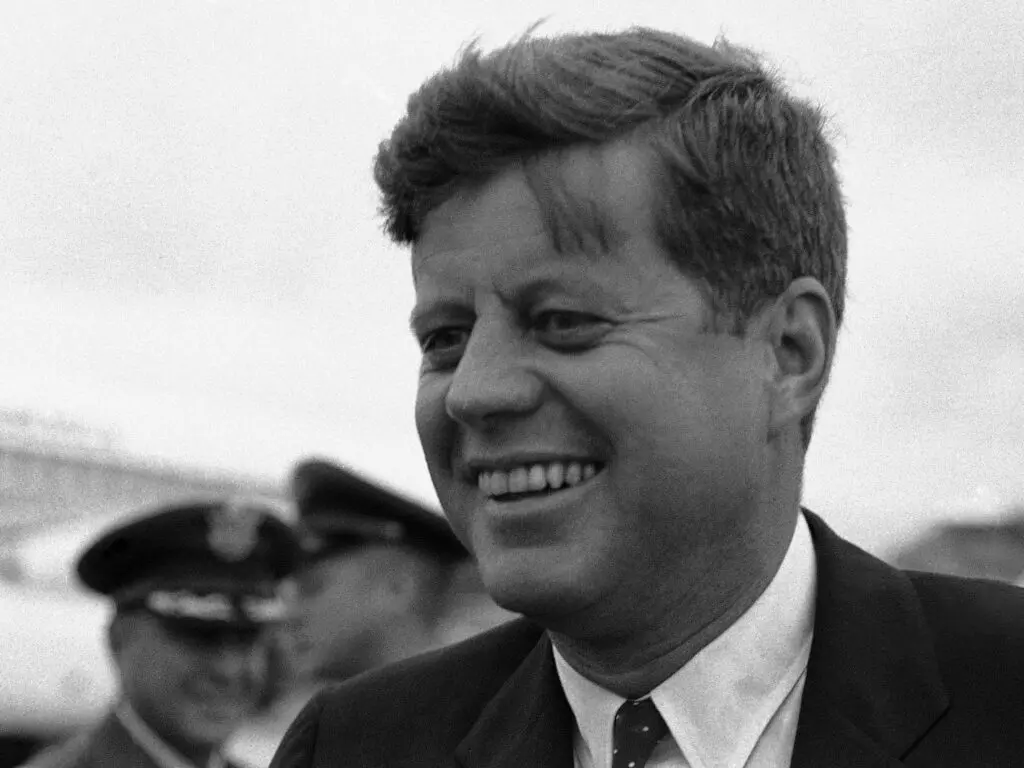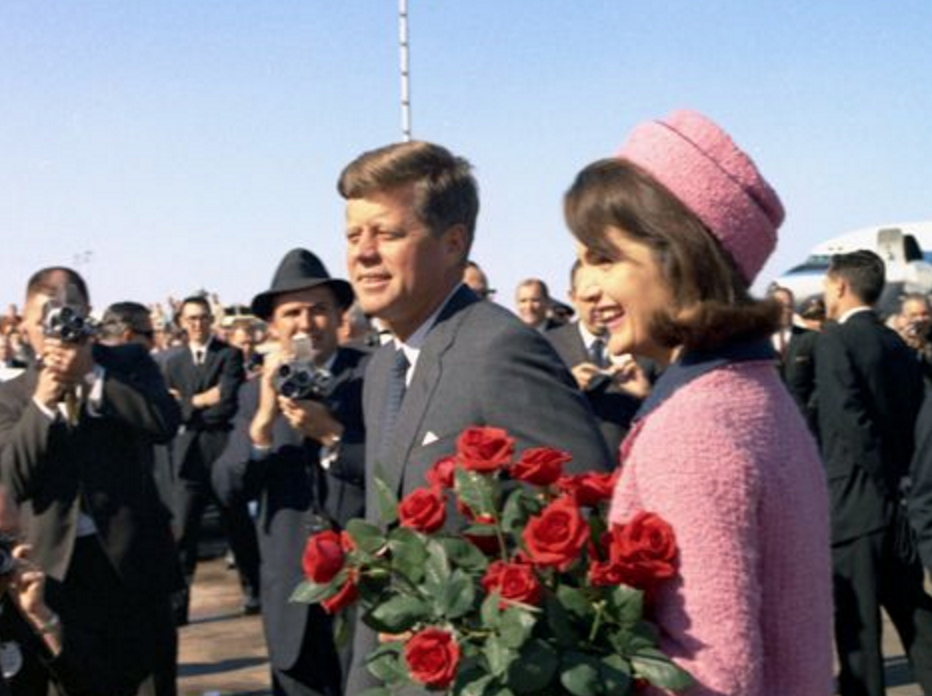
“JFK and Mary Meyer: A Love Story” is a most unusual thing: a novel with footnotes. In the 1960s, the New Journalists adopted the techniques of novelists to spice up their reporting. Author Jesse Kornbluth offers a 21st century variation. He imports the apparatus of academia to give ballast to the true tale of a torrid affair.
The story is the real-life romance of President John F. Kennedy and painter Mary Meyer. As imagined by Kornbluth, a writer for Vanity Fair, the relationship unfolds in her diary. That conceit is kickstarted by the historical fact that the real Mary Meyer kept a diary (described by her friends as a sketchbook) that disappeared into the hands of her friend James Angleton, chief of CIA counterintelligence, after her death. People have been speculating about the contents of Mary Meyer’s diary ever since.
Kornbluth recreates the world in which Jack and Mary lived in the early 1960s with deft economy. He captures the dinner parties (“Jackie was licking her lips a lot”), the popular music of the moment (jazz samba), and the masculine banter (“Hey, Chickee baby”). All the while he gives us the interior narrative of a smart woman navigating a sexist world. After a spat with JFK, Mary observes “In the courtship phase the woman thinks she’s equal—well, more than equal because she’s elevated and he’s rising to her; once the relationship is established, she learns she isn’t equal.”

Kornbluth knows how to evoke the wealthy, cosmopolitan East Coast milieu in which Jack Kennedy and Mary Meyer flourished. He himself attended Milton Academy, the Massachusetts boarding school where Robert and Edward Kennedy had gone–and where one of Mary Meyer’s sons would go. He knows the easy arrogance of a “filthy rich” Irish prince like Jack Kennedy. He intuits the calculated aspirations of a creative heiress like Mary Meyer hemmed in by gender norms.
The footnotes add weight. Mary was an aspiring abstract painter and divorced mother of two falling in love with a charming, ruthless and vulnerable man who happened to be the president of the United States. They had first met at a school dance party twenty years before and mutual attraction brought them back together. In Kornbluth’s version of the story, they give each other what the other craves. For him, acceptance and freedom. For her, purpose and power. They meet often in bed.
Light fiction anchored by hard fact is a piquant mix. The footnotes yield fascinating nuggets of New Frontier lore while Kornbluth’s chatty, catty dialogue evoke the New Frontier scene in all of its harsh glamour. Jackie was a chain smoker but made sure she was never caught on camera. Kennedy’s back pain was so bad he often walked on crutches. JFK was caustic about his friend Ben Bradlee, soon to become editor of the Washington Post. “Ben traded his journalistic independence for access and friendship.” Phil Graham, publisher of the Post went mad and told a roomful of people that JFK was having an affair with Mary. Then he killed himself. It was a cutthroat world.
High politics woven into social reality make “JFK and Mary Meyer” one of the best books about Kennedy’s presidency that I have read in recent years. It embellishes, in the best sense of the word, the political perspective of Thurston Clarke’s 2013 history, “JFK’s Last 100 Days.” This is a portrait of a fallible statesman in the eyes of the woman who knew him as well as anyone, fiction with a well-earned sheen of historical truth.
The Subject Is Power
As a Washington novel, “JFK and Mary Meyer” interrogates the subject of power. Mary knows how power works, even if she has little of it. After a fight with her jealous ex-husband, Cord Meyer, chief of cultural operations at the CIA, she thinks “The closer I get to Jack and Jackie, the nastier he’ll be to me, ” A footnote reveals Cord Meyer was the principal operative of Operation Mockingbird, a secret program to influence the U.S. and foreign press.

When Mary finally falls in bed with JFK, she’s pleased but matter of fact. “No fireworks and rockets for me,” she tells her diary. “I felt clear-headed. Wide awake. Like we’d just accomplished something.” The footnote cites a dozen books reporting that JFK was a selfish lover interested only in his own pleasure. In Kornbluth’s telling Mary forgives his compulsive womanizing because of eloquence and his “incredible, arresting eyes.”
The issues of the day arise naturally. When Jack and Mary discuss the pressure on him to escalate the war in Vietnam, she advises him to make it go away. “Not the year before an election,” he replies. The footnote observes that Vice President Lyndon Johnson, Joint Chiefs chairman Gen. Maxwell Taylor, and public opinion all strongly favored the intervention that JFK was passively resisting.
In the novel, as in real life, Mary encourages JFK’s liberal instincts. When he’s riding high in early 1963, she urges him to spend his political capital on a nuclear test ban, something to give the world hope. Which he did. The footnote adds a fact I did not know. Before JFK proposed the ban on nuclear testing, up to 75 percent of the public supported it. The footnote adds that JFK staked his presidency on a limited test ban, overrode the objections of his generals, persuaded the public, and won Senate ratification. It his proudest moment as president.
Mary is there when Kennedy gives his famous “strategy for peace” speech at American University on June 10, 1963. The next day civil rights leader Medgar Evers is killed, and Kennedy gives another speech, calling for passage of the Civil Rights Act, something he had resisted out of political realism for two years. “Two great speeches in two days,” Mary observes, “Who was the last president to do that?”
First Lady Jackie Kennedy, a friend of Mary’s since Vassar College days, flits in and out of the story, enigmatic and evasive. While JFK and Jackie make an attractive couple in public, privately they are usually alienated. Jack is both cruel and needy with is wife. When Kennedy returns to Jackie’s side after their newborn son Patrick died in August 1963, Mary observes, “Anyone who doesn’t know them would say: He’s holding her up. I see just the opposite: He’s broken. She’s holding him up.”
Mary feels guilty about the affair and tries to stay away from the White House. When Jackie goes to Greece in October 1963 to cruise on the yacht of Greek shipping tycoon Aristotle Onassis, Mary wonders if Jackie and Onassis are having an affair. (Of course, Jackie and Onassis would later marry). The footnote reveals another buried secret. In October 1963, JFK wrote Mary a three-page note importuning her to come visit while Jackie was away. Kennedy’s secretary never sent the letter.
The day Kennedy goes to Dallas, Mary writes in her diary, “Come back. Come back. Come back.” The affair is over.

Aftermath
“JFK and Mary Meyer” is not about Kennedy’s assassination but of course it can’t help but be. In the novel, as in life, Mary doesn’t believe the official story of a lone gunman. “She may not have learned who pulled the trigger,” Kornbluth writes, “but she definitely felt she knew who paid for the bullets.”
And then she too dies a violent death. On October 12, 1964, Mary took a walk on the C&O Canal near her home in Georgetown when she was accosted, shot, and killed. No murder weapon was found. The only suspect in the crime, an African-American man, was later acquitted. As with JFK, so with Mary Meyer. No one was ever brought to justice for their wrongful deaths.
In an epilogue, Kornbluth touches lightly on the questions of conspiracy. He cites two other books about Mary Meyer, Nina Burleigh’s excellent A Very Private Woman, and Peter Janney’s more personal memoir, Mary’s Mosaic.
Janney, a psychologist and son of a CIA officer, knew Mary Meyer as a friend of his parents. He argues Mary was killed by CIA men, including her ex-husband. I don’t think Janney’s evidence proves his case. But given the world in which Mary Meyer lived and died, there is room for reasonable doubt.
In closing, Kornbluth observes that he set out to write a book about the relationship of Jack Kennedy and Mary Meyer and wound up writing another book at the same time, a story of “power and institutions and the way they intersect to make power and those institutions permanent. Mary Meyer had an insider’s look at that process. It’s entirely possible she paid for it with her life.”


